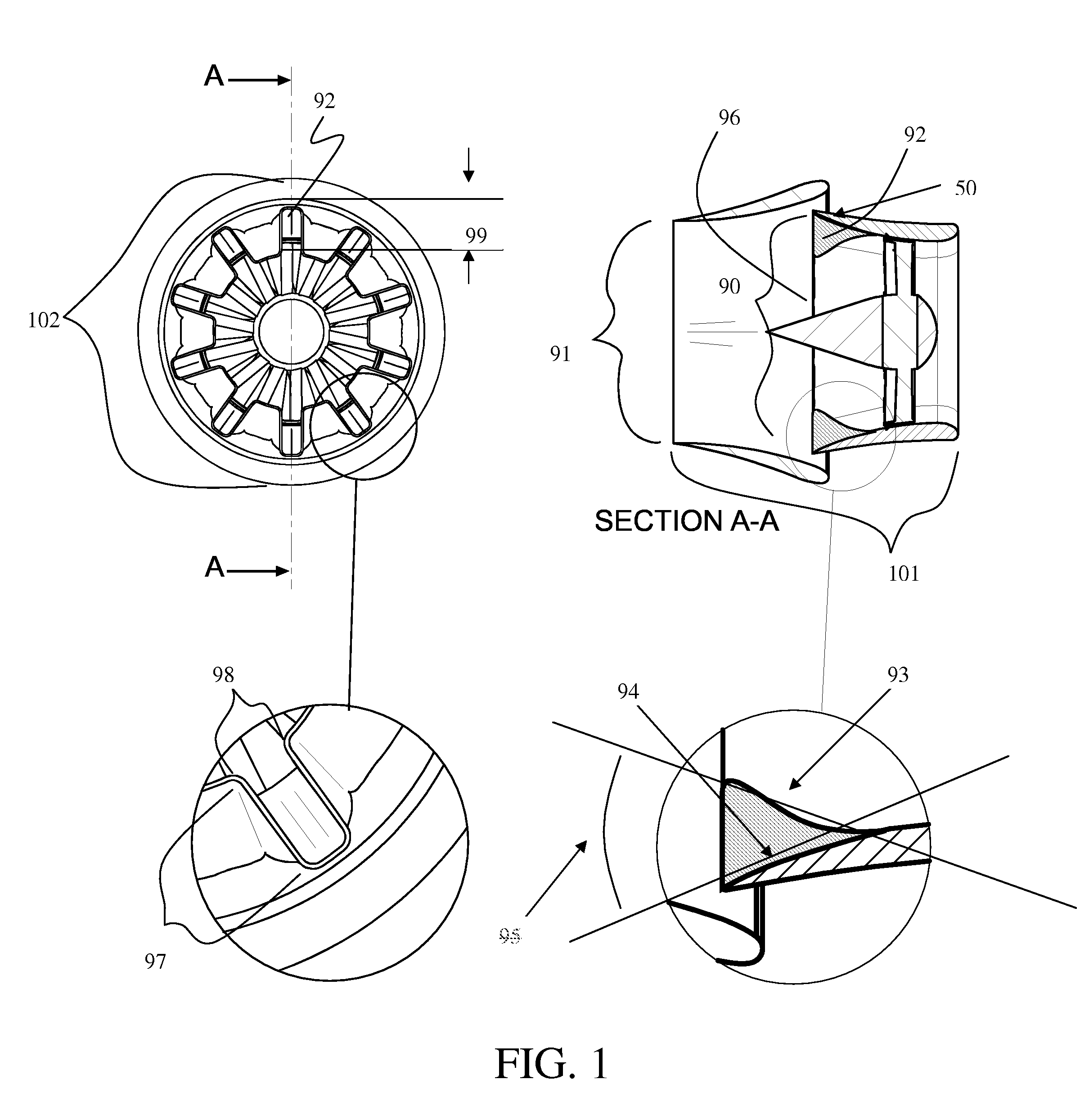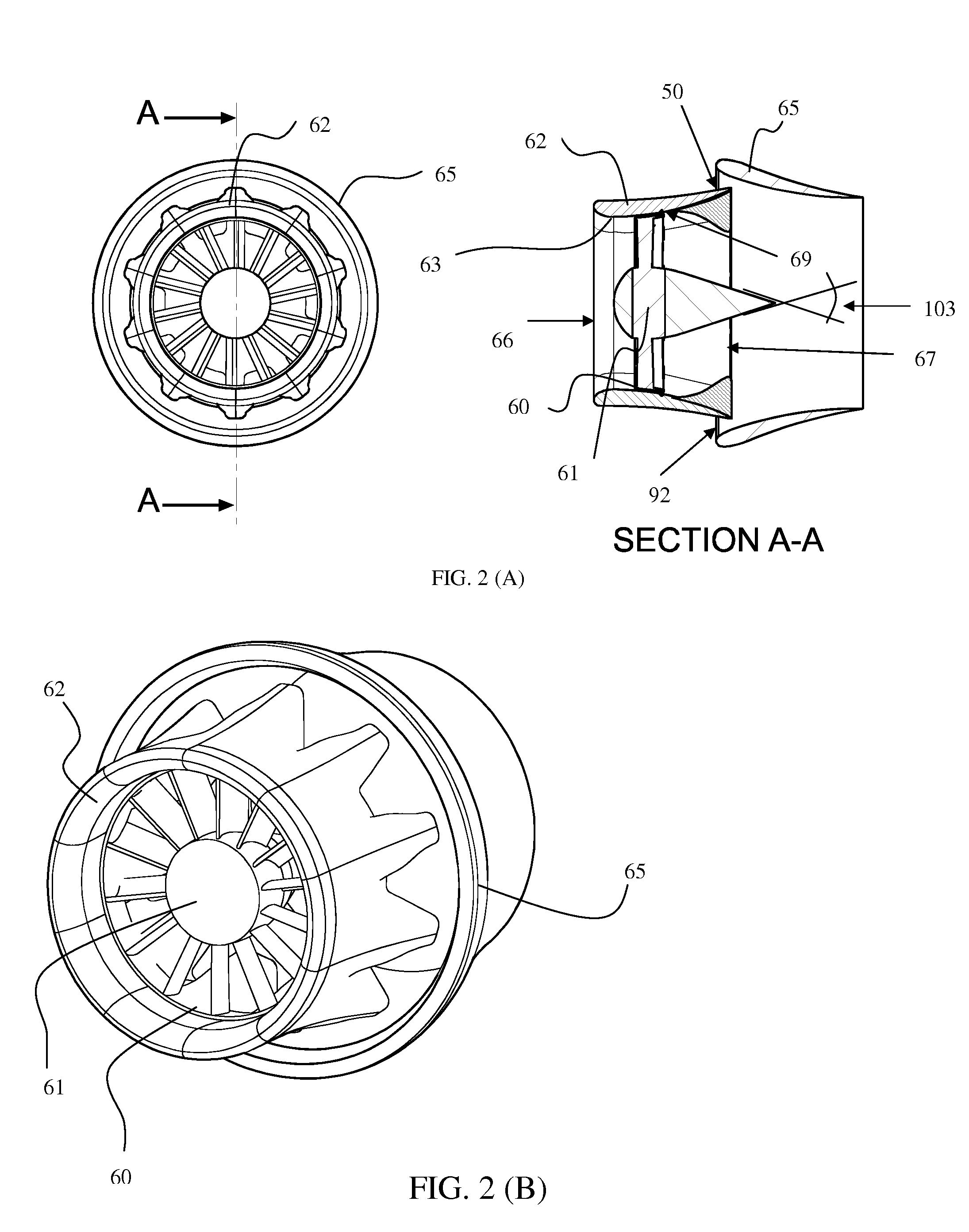Propeller Propulsion Systems Using Mixer Ejectors
a technology of propeller and ejector, which is applied in the direction of machines/engines, stators, liquid fuel engines, etc., can solve the problems of limited power to force conversion ability of props placed in a stream of very large width compared to its diameter, and limited attention has been given to the application of subsonic/incompressible propeller propulsors, so as to achieve the effect of reducing the impact on the environmen
- Summary
- Abstract
- Description
- Claims
- Application Information
AI Technical Summary
Benefits of technology
Problems solved by technology
Method used
Image
Examples
Embodiment Construction
[0025]Referring to the drawings in detail, Applicants' novel mixer-ejector propeller system (nicknamed the “MEPS”) is disclosed and like reference numerals refer to like elements. MEPS combines advanced flow mixing devices (hereinafter “MIXERS”), ejector pumps (hereinafter “EJECTORS”) and propellers (hereinafter “PROPs”) elements for increasing force generated in a fluid stream.
[0026]The MEPS uses aerodynamically contoured shrouds and ejectors surrounding a propeller system which consists of one or more rows of blades to input power to the oncoming fluid stream. The shrouds and ejectors are designed and arranged so as to draw the maximum amount of fluid through the propeller for maximum propulsion efficiency. First-principles-based theoretical analysis of MEPS indicate that they can increase propulsion by fifty percent or more when compared to the thrust produced by un-shrouded counterpart propellers for the same frontal area and power input.
[0027]In the first preferred embodiment, ...
PUM
 Login to View More
Login to View More Abstract
Description
Claims
Application Information
 Login to View More
Login to View More - R&D
- Intellectual Property
- Life Sciences
- Materials
- Tech Scout
- Unparalleled Data Quality
- Higher Quality Content
- 60% Fewer Hallucinations
Browse by: Latest US Patents, China's latest patents, Technical Efficacy Thesaurus, Application Domain, Technology Topic, Popular Technical Reports.
© 2025 PatSnap. All rights reserved.Legal|Privacy policy|Modern Slavery Act Transparency Statement|Sitemap|About US| Contact US: help@patsnap.com



